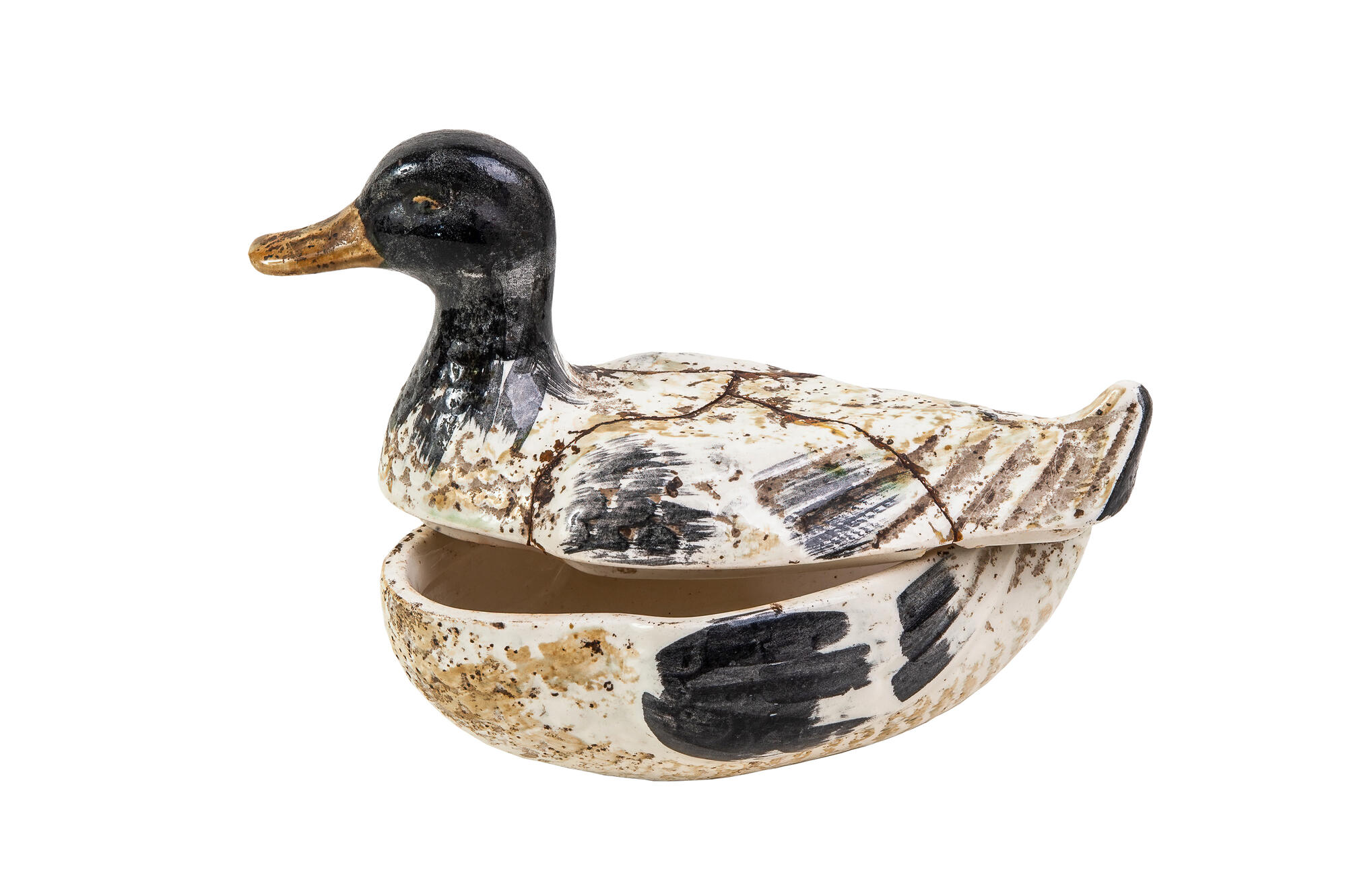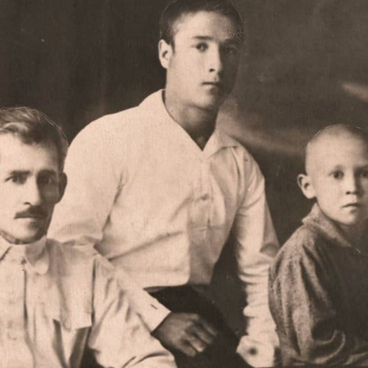In the house of Majit Gafuri this duck-shaped butter dish had a special place. The poet’s family always had natural dairy products on their table. Gafuri kept a milk cow that was gifted to him for his anniversary in 1923. Named daughter of Majit Gafuri Nagima recalled: “Uncle Majit and I took care of her. He used to feed the cow himself. I milked it, but could not milk it completely. Gafuri used to say, “Eter, balatsay” (“Enough, my daughter”). He was the only one in the family who drank milk. At that time, actors of the theater received only a fee for performances, and Gafuri gave them milk. He was a theater-goer and was friends with many of the artists…’
The butter dish is made of porcelain and decorated with hand-painted reliefs. Presumably, it was produced in the middle or at the end of the 19th century in the famous Kuznetsov factory. They opened their first enterprise in 1810. In Gafuri’s house, the butter dish served not only for storing butter. According to recollections of the poet’s family friends, it was also used as a candy bowl.
Majit Gafuri’s family was very hospitable: friends, associates and relatives often visited them. The mistress of the house Zukhra treated everyone to tea and arranged various fun games. Many of the poet’s contemporaries remembered these evenings and the creative atmosphere of the house.
The town executive committee presented the house-estate, where the museum is located today, to Gafuri in 1923 in honor of the 20th anniversary of the writer’s literary work. Gafuri lived there until his death in 1934. There, he wrote the stories “Black-Faced” (1927), “Steps of Life” (1928), “On the Gold Mines of the Poet” (1930), a drama “The Red Star” (1925), the poem “Eshse” and the libretto to the opera “Eshse” (“Worker”) based on his poem of the same name, which premiered at the Tatar State Opera and Ballet Theater in Kazan. After his death, his wife Zukhra and his son Anvar’s family continued to live in the house. The writer’s museum opened there in 1948, and initially, it occupied only half of the house. The family of Anvar Gafuri was provided with an apartment in 1953, and the house of Majit Gafuri was given the status of a Memorial House-Museum.
The butter dish is made of porcelain and decorated with hand-painted reliefs. Presumably, it was produced in the middle or at the end of the 19th century in the famous Kuznetsov factory. They opened their first enterprise in 1810. In Gafuri’s house, the butter dish served not only for storing butter. According to recollections of the poet’s family friends, it was also used as a candy bowl.
Majit Gafuri’s family was very hospitable: friends, associates and relatives often visited them. The mistress of the house Zukhra treated everyone to tea and arranged various fun games. Many of the poet’s contemporaries remembered these evenings and the creative atmosphere of the house.
The town executive committee presented the house-estate, where the museum is located today, to Gafuri in 1923 in honor of the 20th anniversary of the writer’s literary work. Gafuri lived there until his death in 1934. There, he wrote the stories “Black-Faced” (1927), “Steps of Life” (1928), “On the Gold Mines of the Poet” (1930), a drama “The Red Star” (1925), the poem “Eshse” and the libretto to the opera “Eshse” (“Worker”) based on his poem of the same name, which premiered at the Tatar State Opera and Ballet Theater in Kazan. After his death, his wife Zukhra and his son Anvar’s family continued to live in the house. The writer’s museum opened there in 1948, and initially, it occupied only half of the house. The family of Anvar Gafuri was provided with an apartment in 1953, and the house of Majit Gafuri was given the status of a Memorial House-Museum.



